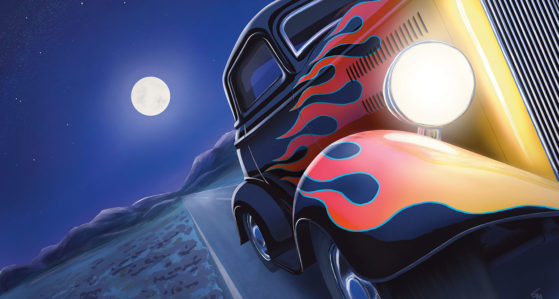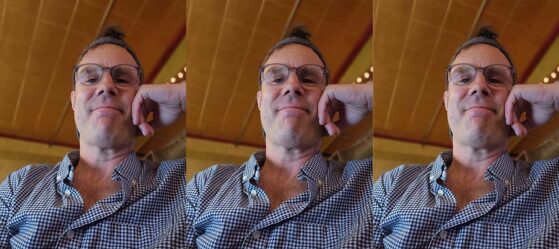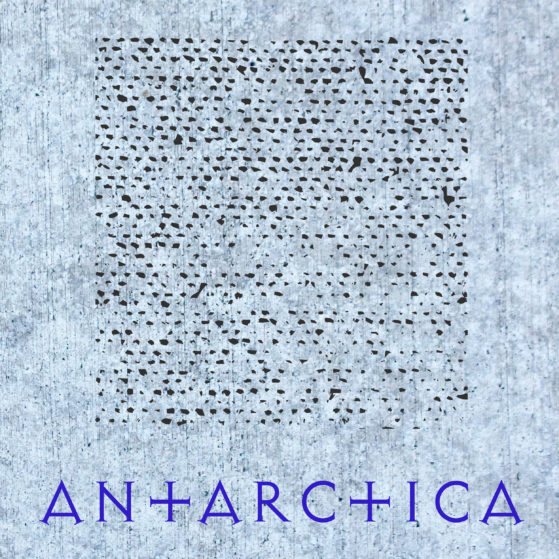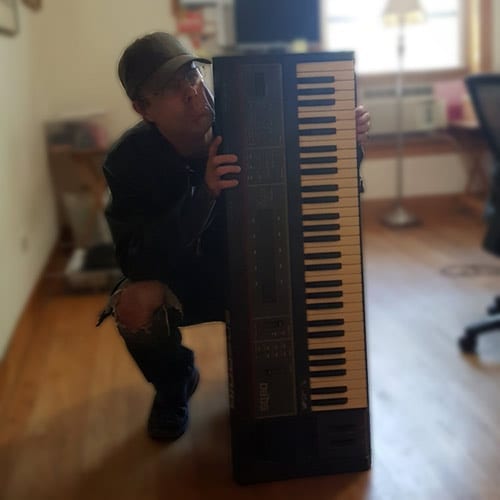
There were many amazing things about this keyboard I had no idea existed when I purchased it. It had some incredible sounds, that’s for sure. You could store 40 patches (sounds) in the RAM at any time, and switch them out with others from the on-board floppy drive, or its handy ROM card slot.
Anecdote break: Once I had a problem with the synth. I think it was powering up okay, but no sounds were coming out of it. I took it back to Gand Music, where the guy that sold it to me (Alan Thacker) told me to put it in the trunk of my car and drive around the block a few times. If that didn’t fix it, he said to bring it back in to the store. Still not sure about the science behind this, but it totally worked!
The game-changer for me was that the SQ-80 has an 8-track sequencer built-in. This means I was able to record a synthesizer part (the keyboard had some drum sounds, too), then record 7 more parts on top of it to piece whole songs together. I would record the output in stereo onto 2 tracks of my Tascam 244 4-track recorder, then add guitars and vocals after.
The SQ-80, as with all keyboards around that time and forward, had MIDI outputs. This means I could play other MIDI instruments via the sequencer, which I first started by triggering an Alesis HR-16 drum machine whose drum sounds were much better than the SQ-80’s factory drums. I would later use the SQ-80 to trigger a Roland D-50 synth, and my rack-mount Yamaha TX81Z sound module.
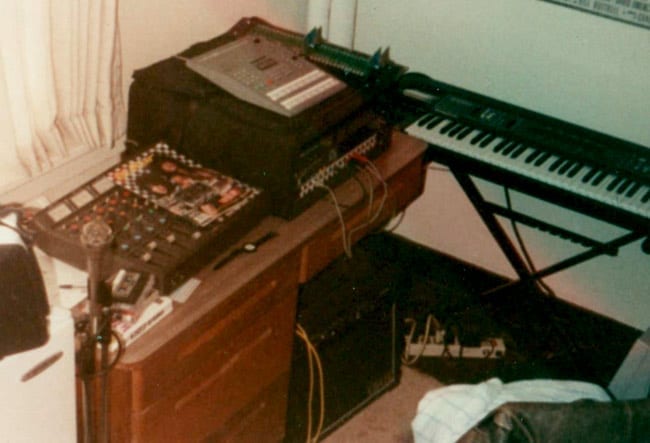
Another cool thing about the SQ-80 was that it was very easy to program my own custom sounds. I spent many an hour picking different variations of its 3 oscillators and went to town with envelopes and LFOs, gently tweaking the factory patches, or coming up with wild instruments of my own. The lighted LCD screen and context menus made synthesis very easy to understand. It was also with this keyboard that I started applying the Golden Ratio to my sounds.
Anecdote break: Several years after I bought my SQ-80, I had a little bit of money so I went back to Gand Music to look at an additional keyboard. Alan was there again, and put down his salesman hat in favor of some good consumer wisdom that still rings true today. He said “your current keyboard has all the same features it did when you purchased it”. He was right. I really didn’t need another one.
The SQ-80 sounds and sequencer were used to put together my first few albums (you can hear it all over the Songs for the Sacred Age retrospective), but when I was able to switch to computer-based recording, I found I didn’t use the SQ-80 much anymore. My computer recording gear (Cakewalk Sonar) shipped with a bunch of its own software synthesizers (‘soft synths’) which were pretty good. At that point (for the Love Song for Kyrie Snow and Romance of the Spaceways albums) I was using my computer sequencer to trigger my EMU Proteus rack-mount synth which had much better sounds and also had effects of its own. I later ventured into Native Instruments territory by getting a hold the company’s “Komplete” library, which is a suite of about 25 extremely versatile soft-synths and samplers. They all sound incredible, and take up no real estate outside of my hard-drive, unlike a full-sized outboard synth.
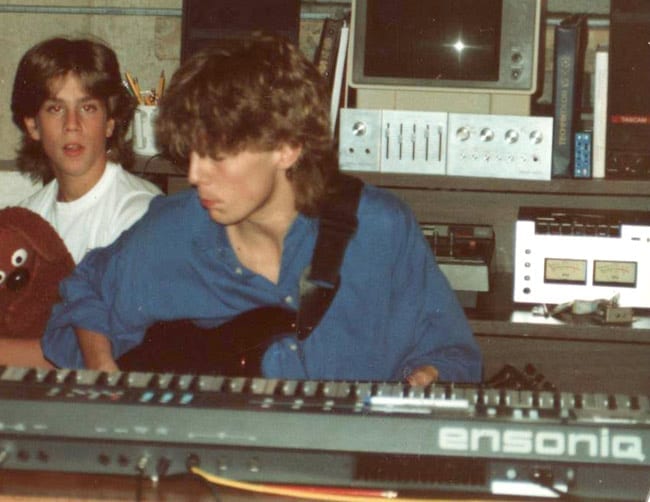
I peeked at Reverb.com which is an online marketplace for musical gear. It turns out it’s fine to list non-functioning items as long as you describe exactly what the issues are. There were four or five other SQ-80s for sale for $600. I figured I would list mine (non-functioning) for $325 which turned out to be too low, as I received about 5 counteroffers in the first day. Finally, a woman named Allie from Cupertino, California grabbed it at my listed price.
It’s tough to say goodbye to a piece of gear that was pretty much the bedrock of so many of my early recordings. But I’m happy that it’s going to get a new lease on life. Allie restores vintage synths as a hobby and is starting to teach her teenage son how to do the same. It’s definitely going to a good home!
UPDATE: My keyboard has been purchased by some caring folks and was nursed back to health!
I got a bit nostalgic looking at that dorm room image, so I made another post about my 1989 studio set up.

